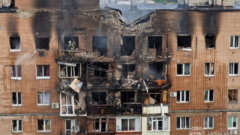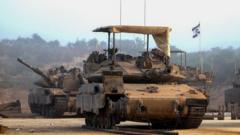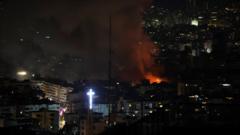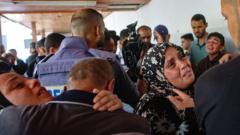As the Gaza conflict intensifies, the health ministry's reported death toll raises questions of accuracy and transparency. Though Hamas claims over 51,200 dead, Israeli officials challenge the veracity of these numbers, citing discrepancies and alleged propaganda.
Controversy Surrounds Gaza Death Toll Amid Ongoing Conflict
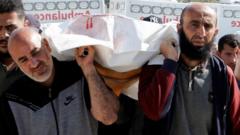
Controversy Surrounds Gaza Death Toll Amid Ongoing Conflict
The Hamas-run health ministry in Gaza faces allegations of manipulating casualty figures as the number of confirmed deaths surpasses 51,000, prompting scrutiny from both Israel and health officials.
Gaza's Hamas-run health ministry has reported that the ongoing conflict has led to the deaths of more than 51,200 Palestinians since the escalation began. Amid the turmoil, Alam Hirzallah finds himself grappling with a heartbreaking duty: documenting the deaths of his family members, victims of an Israeli shelling in eastern Gaza City. He recounts how his family retrieved the bodies of his cousin's wife and children, only to face complications in arranging their burial due to Israeli-controlled cemeteries.
The Hamas health ministry claims the casualty figures, highlighting that a significant portion of the deceased are minors. However, the accuracy of these numbers has been called into question by Israeli authorities, who assert that the statistics are often manipulated for propaganda purposes. The Israeli government has consistently disputed the figures, particularly regarding the claimed proportions of women and children killed.
Recent media investigations have highlighted inconsistencies in the fatalities reported from various months. Notably, around 3,000 names were removed from the Gaza health ministry's records, prompting allegations of manipulation. Health official Zaher al-Wahidi has denied these claims, explaining that the process of verifying data is ongoing and that some names are removed for accuracy rather than deception.
Historically, casualty numbers in Gaza were collected by tallying the bodies arriving at hospitals; however, as the conflict escalated, this method became increasingly unreliable due to the damaged medical infrastructure. Consequently, officials introduced an online reporting system allowing families to log deceased or missing individuals. Al-Wahidi insists that this revision and verification process increases data credibility, although critics view it as evidence of potential discrepancies.
Verified casualty numbers may not include deaths from indirect causes, such as starvation or lack of medical care. A judicial committee has been deployed to assess reported casualties, identifying instances where individuals were falsely marked dead or had died for unrelated reasons.
The complexity of counting casualties is compounded by thousands of bodies buried under rubble from airstrikes and a lack of available identification methods. Earlier ceasefires allowed for some recovery efforts, leading to the identification of additional remains.
Amid the resurgence of military actions in Gaza, reports indicate the death toll is continuing to rise, with Israel estimating that around 20,000 Palestinian fighters have been killed since the conflict's onset. Despite the ongoing violence, international journalists face barriers to verifying these figures independently, often relying on local sources for accurate information.
Ultimately, the magnitude of casualties experienced in the current conflict dwarfs those from previous cycles of violence, leaving an uncertain future for the region as the war continues without resolution.





